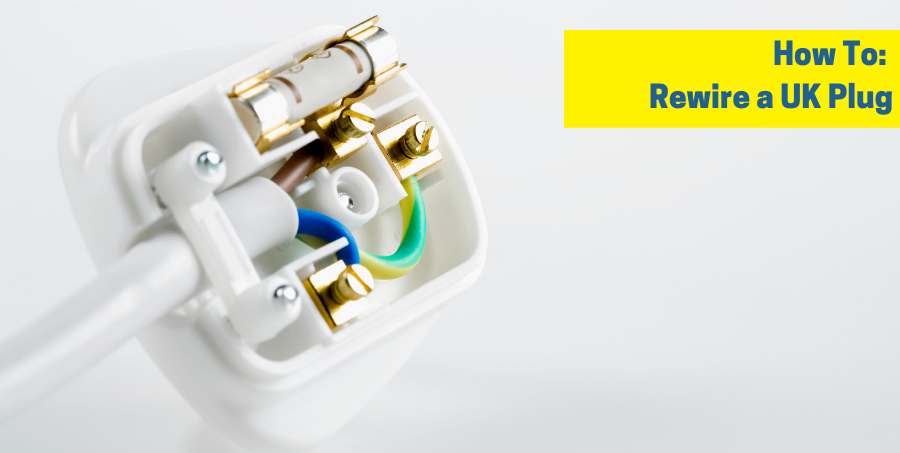How to: rewiring a UK plug

Sooner or later, most people need to learn how to rewire a UK plug. The wires inside a plug can come loose through constant usage. While that is occasionally frustrating (as in, your appliance won’t work), it can also be dangerous. If a plug has insecurely wired electrical contacts, or worse, if it’s been wrongly wired by someone, electric shock is possible, or an electrical fire could start.
So, here’s our step-by-step guide on the basics of rewiring a UK plug. It’s not difficult, but you must place the right wires in the correct terminals.
Before proceeding, make sure you have the necessary tools. They are:
- a utility knife (more commonly called a Stanley knife)
- an insulated electrical screwdriver, and either
- a set of wire cutters or wire strippers.
Step One: Remove the plug from the mains socket before proceeding. People have been killed by electrocution while attempting to remove a fuse with a plug still in the mains socket, so this is an essential step.
Step Two: Unscrew the retaining screw on the plug’s plastic casing and open the plug, setting the top cover of the casing to one side. Keep the retaining screw safe if it’s removable as you won’t be able to reassemble the plug if it goes missing.
Step Three: If you find a plastic cable clamp holding the cable firmly in place inside the plug’s housing, remove one of the two screws, put it safely to one side and unscrew the other one almost to the end. You can then simply pivot the clamp out of the way of the cable. That is faster than removing both screws.
Step Four: Using the utility knife, slit the outer insulation of the cable by about 4cm, taking care not to damage the insulation of the three “core” wires as you do so. Prise the outer insulation apart and cut neatly away at the base of the slit, exposing 4cm of the three insulated cores.
Step Five: Pull the three core wires apart from one another and begin “cutting them down to size.” It’s best to place them next to the connection terminals in the plug so that you have a “template” for how long they need to be: the earth (yellow and green) is the longest, the neutral (blue) is the next longest, and the live (brown) is the shortest and tightest. If you leave these wires the same length as one another, you risk crushing them when you screw the cover back into place. Make sure there is more slack in the Earth wire and that the Live wire is the tightest. If there’s an accidental tug on the cable after assembly, this will ensure that the earth will be the last wire to disconnect, protecting against electric shock.
Step Six: Use the wire cutters or strippers to remove about 5mm of the insulation at the end of each wire, exposing the fine copper wires inside. The amount of copper protruding should be enough to reach the depth of each terminal with no more than 1mm protruding at the other side. Make sure there is no damage to the remaining insulation on the core wires. If there is, cut the wire back and begin again.
Step Seven: Twist the fine copper wires on each core tightly and loosen the terminal screws on the plug. Then, insert each of the three core wires into the appropriate terminals. They’ll be marked E for Earth, N for Neutral and L for Live. Sometimes they’ll have colours representing the different conductors: green for earth, black for neutral and red for black. These colours represent the older colours for the three conductors.
Step Eight. Tighten the terminal screws to securely fix the copper ends of the conductors in place. Make sure the screws are in contact with the copper wires only, not the insulator.
Step Nine: Re-tighten the screws on the cable clamp so that the cable is held firmly in place.
Step Ten: Replace the plug lid and screw it tightly back into place.
If you’re replacing an old or damaged plug, check the extensive range of rewireable plugs on offer from Euronetwork. Each of our rewireable plug offerings is from reputable sources and they are attractively inexpensive so that you can buy them in bulk without breaking the bank. The rewireable plugs we supply are fully compatible with UK standards and many are used not only for domestic purposes but also in the theatrical and shopfitter sectors.

